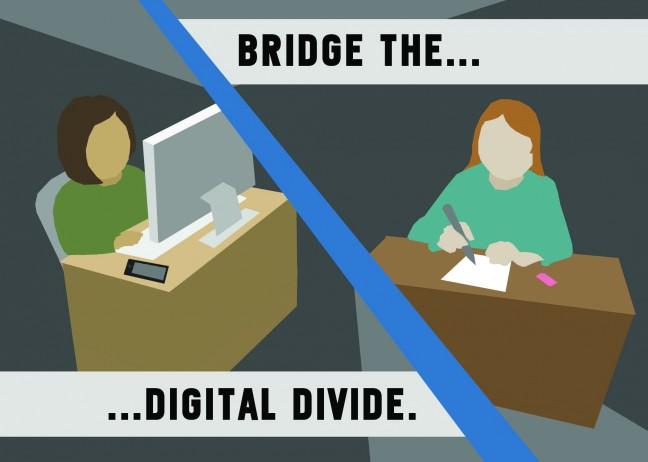A new city proposal that would bring Internet access to impoverished neighborhoods now faces the decision of providing high-speed Internet or cheaper, slower 4G services.
The idea for this program has existed for a few years now, Ald. Scott Resnick, District 8, said, but the city is now moving along in the development process by reaching out to vendors and examining possible ways to implement it.
The program’s goal is to provide reliable Internet access to low-income neighborhoods throughout Madison, such as Kennedy Heights, Brentwood, Allied Drive and Darbo Worthington, Resnick said.
The city has already requested ideas and concepts from vendors, Resnick said. He said four have applied for the project: a local company, a company from Nevada and two from T-Mobile and U.S. Cellular. The city proposed questions to these vendors Thursday.
Resnick said the proposals they have heard all fall into two categories. One category of proposals suggests creating and putting up antennas or 4G service. The second category of proposals supports using Wi-Fi connection or subsidized rates.
Erik Paulson, who serves on the city’s Digital Technology Committee, said even thought the city is looking primarily at 4G and fiber lines, they are still open to other options.
“All the responses we got back listed some kind of 4G as their proposal solution, but that doesn’t mean the committee won’t ultimately recommend issuing a request for proposals for a more traditional looking solution, something like putting Wi-Fi in a couple of apartment buildings,” Paulson said.
Paulson said the 4G option would allow them to reach many more people with less of a geographic constraint, which he said is an exciting concept. He also said this method has more complications including limitations on the access they would have to funding.
Resnick said the big difference between the two categories of proposals are the variances between 4G network and fiber to the home.
Resnick said fiber provides high-speed Internet, but at a high cost. This high cost of fiber applies to the amount that would be paid by the end user, as well as the work that would have to go into simply laying the fiber connection, Resnick said.
Since most of these homes that would be involved in the project don’t have any internet to begin with, a “cheap and reliable Internet service is a higher priority than trying to provide the fastest Internet service,” Resnick said.
Resnick said the project is currently in the process of gathering cost estimates, but when they investigated this project four years ago they saw that fiber would have been a $92 million proposal. The 4G solution, on the other hand, is more in the $1 million range.
Because the resources from the 2015 capital budget can only be allocated towards specific projects, it limits the ways the project can use them and may create additional complications, Paulson said.
Paulson said they want to begin the pilot program as soon as they can, but they currently have $150,000 from the 2015 budget, which he said is less than what some of the solutions suggest as the base amount needed to get the program started.
“There is some additional money planned for the 2016 budget explicitly for a wireless network so we might be able to do something where we spend the 2015 money on a project that ties into the 2016 project and makes all the money go further,” Paulson said.
All in all, Resnick said even though the 4G connection is modest when it comes to speed, it is a better cost alternative for Madison neighborhoods.
So far, the public has been behind the proposal, Resnick said.
“I have found a substantial amount of support [for the project], not universal, but near overwhelming,” Resnick said.


